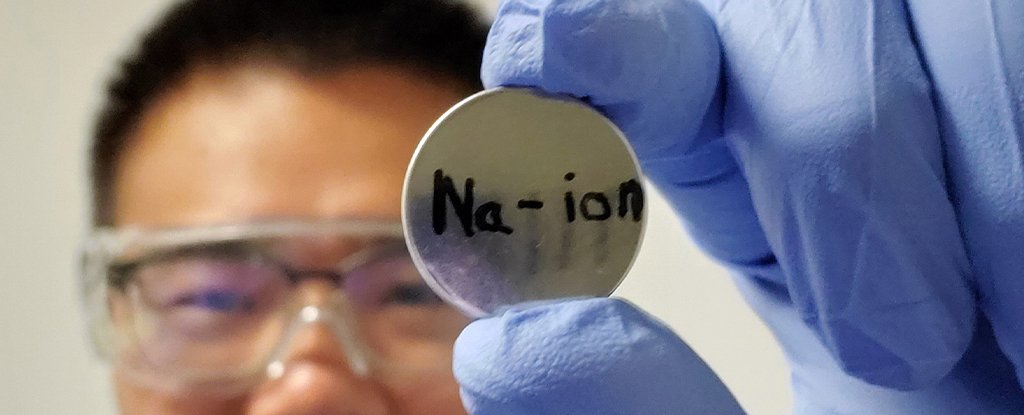Products You May Like
So much of our everyday tech runs on batteries, the importance of lithium-ion rechargeables cannot be overstated. But they are expensive to produce, with difficult-to-source materials.
There is an alternative - sodium-ion batteries have the potential to be cheaper and more easily produced, if we can get past the problem of getting these batteries to work as well as the lithium-ion technology we’re predominantly using. Now, we may have just gotten a huge step closer to this goal.
Researchers have produced one of the best sets of results so far for a sodium-ion battery, one that holds as much energy as lithium-ion, and performs as well as some commercial lithium-ion batteries. It’s a “major development” in sodium-ion (Na-ion) battery research, the team says.
One area where Na-ion batteries might be particularly useful is in large-scale energy storage. As the world makes the transition to renewable energy, that storage is going to be ever more important – and we’re going to need battery technology that’s cheap to produce and straightforward to scale up.
‘The key challenge is for the battery to have both high energy density and a good cycle life,” says materials engineer Junhua Song, from the Lawrence Berkeley National Laboratory.
Right now, lithium-ion batteries have the advantage over sodium-ion: they last longer, and they hold more energy. One of the reasons is that a lot of potential materials used for the cathode – the part of the battery that receives the flowing electrons – end up with a damaging build-up of inactive sodium crystals, eventually killing the energy transfer.
To get around this, the scientists purpose-built a layered metal oxide cathode, and developed a liquid electrolyte that held additional sodium ions. This resulted in a saltier mixture inside the battery, a better interaction with the cathode, and no collection of sodium crystals.
Over the course of 1,000 cycles, the new Na-ion battery still retains over 80 percent of its charge – not enough to make its way into your smartphone just yet, but a huge step forward for the alternative battery technology, and one that promises more advances in the future.
“Our research revealed the essential correlation between cathode structure evolution and surface interaction with the electrolyte,” says materials scientist Yuehe Lin, from Washington State University (WSU).
“These are the best results ever reported for a sodium-ion battery with a layered cathode, showing that this is a viable technology that can be comparable to lithium-ion batteries.”
The researchers aren’t finished there, either: they say they want to look closer at the interactions between their electrolyte and cathode, and improve the efficiency even further. They’re also keen to eliminate the use of cobalt, which is another material that’s rare and difficult to source, but is frequently used in commercial lithium-ion batteries and experimental Na-ion ones.
While lithium-ion dominates the market in terms of phones, laptops and electric cars at the moment, it does have its weaknesses – not least the expensive sourcing of lithium. If we’re going to need more of these batteries, it makes sense to have an alternative.
That’s not to say innovations can’t happen with lithium-ion batteries, too: scientists are figuring out how to get these batteries to last longer and to charge more quickly. The more options we have on the table, the better, whether that’s lithium-ion, sodium-ion, or something else.
“This work paves the way toward practical sodium-ion batteries, and the fundamental insights we gained about the cathode-electrolyte interaction shed light on how we might develop future cobalt-free or low-cobalt cathode materials in sodium-ion batteries as well as in other types of battery chemistries,” says Song.
“If we can find viable alternatives to both lithium and cobalt, the sodium-ion battery could truly be competitive with lithium-ion batteries. And, that would be a game changer.”
The research has been published in ACS Energy Letters.
